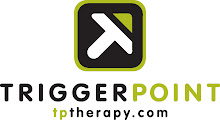I ran the local Pequot Turkey Trot 5-mile race yesterday. This was my fourth time participating in this event. I was curious to see how my recent triathlon run fitness would translate into a fresh road race. I had not competed in a road race in a few years. My first impression is how much different it is then a multi-sport event. I had forgotten just how different the effort is.
A good friend of mine had lured me into this race back in 1999. At the time, I had not run competitively for over 12 years. As I look back on that race, a decade later, I remember how comical our preparation for that race was. We would do 2-3 two mile training runs a week leading into the race. The day of the race was chilly and raining. We lined up in the middle of the 5,000+ pack. I still remember how my lungs burned from the anaerobic effort. I crossed the finish in 37:39 that day. It was not exactly pretty, but I had enjoyed the event tremendously. I would race again the following two years with finishing times of 31:26 and 30:40 respectively. My multi-sport training and racing really started to build after 2001. I found that by the time late November rolled around, I was pretty tired from the racing season. Therefore, I had not participated in the Pequot Turkey Trot since 2001.
This year I felt pretty fresh and I was carrying some good run fitness from my Clearwater preparation. I decided I would give the race a go and see where my "fresh" running was. Race morning was ideal, with temperatures in the low 50s and overcast. As the horn went off, I tried to get out quickly without going out to aggressively. I settled in behind the two lead runners. The pace felt comfortable at the time, so I decided to try to stay with them for a little bit. As we approached the first mile marker, we hit the first slight climb and the lead guy just pulled away. I dropped back a bit and heard 5:10 as I went by the timer. I felt good and I was wondering if I would be able to hold that pace. I then spent the next 3 miles learning what it was like to run a fresh road race again. I went from 3rd place to 9th over this time. My pace slowed some: mile 2 @ 5:24, mile 3 @ 5:27, mile 4 @ 5:20. I was holding it together, but my effort was not the "proper" pacing strategy for a running race. The individuals who passed me, all got stronger as the race went along. I, on the other hand, was holding on for dear life. As I went through the 4-mile marker, my left achilles started to really tighten up on me. This achilles tightness has been a little nuance for me almost the entire year. However, it's never really flared up during a race before. I was a little concerned and I tried to focus on keeping my effort as steady as possible. My form really suffered in this last stretch , but I was able to finish mile 5 in 5:30. That gave me an overall time of 26:54, which placed my in 9th place overall.
I was very happy that I decided to do the race. However, the race and events that events that unfolded during the effort are both fantastic reminders of how different a "fresh" running race can be compared to a multi-sport event.
Ironman Wisconsin
7 years ago









